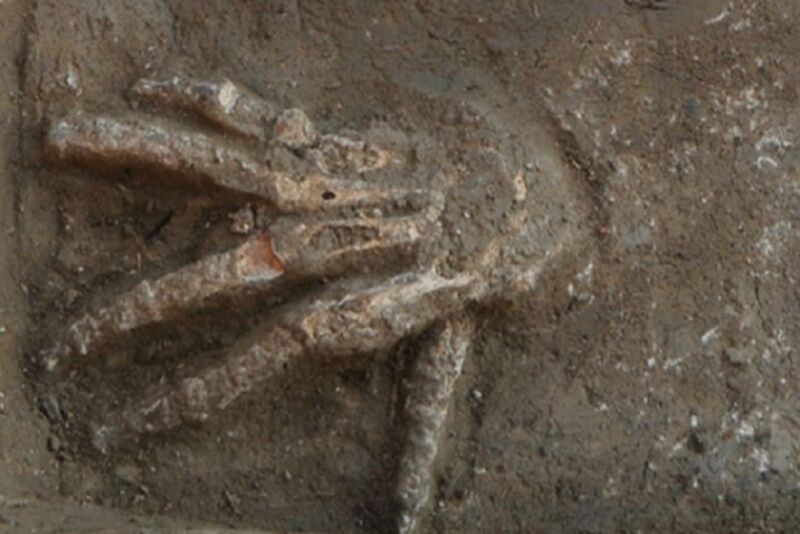
Enlarge / Archaeologists have discovered the first physical evidence of the so-called "gold of honor" ceremony in Ancient Egypt, in which the severed hands of defeated foes were presented to the Pharaoh in exchange for a collar of golden beads. (credit: J. Gresky et al., 2023/CC BY 4.0)
There is evidence that ancient Egyptian soldiers would sever the right hands of foes and present them to the Pharaoh. That evidence comes in the form of tomb inscriptions of prominent warriors, as well as inscriptions and iconography on temple reliefs. Archaeologists have now discovered the first physical evidence of such a trophy-taking practice, according to a recent paper published in the journal Scientific Reports. The severed right hands of 12 individuals were excavated from pits within a courtyard of a 15th Dynasty palace in northeastern Egypt.
The 15th Dynasty (circa 1640-1530 BCE) rulers were known as Hyksos ("rulers of foreign lands"), although they did not control all of Egypt from their seat of power in the city of Avaris—the pharaohs of the 16th and 17th Dynasties ruled from Thebes during the same time period. Historians disagree about whether the Hyksos came to Egypt as invaders or gradually settled in the Nile delta before rising to power. But by the late 17th Dynasty, the Hyksos and the pharaohs were at war, leading to the former's defeat by Ahmose I, who founded the 18th Dynasty.
But the Hyksos nonetheless left their mark on Egyptian culture in the form of certain technological advances and customs, including the practice of presenting the severed right hands of defeated foes in a so-called "gold of honor" ceremony in exchange for a collar of golden beads. Per the authors, the Egyptians seem to have adopted the custom during Ahmose I's reign at the latest, based on a relief showing a pile of hands in his temple in Abydos. Tomb inscriptions and temple reliefs from the 18th to the 20th Dynasties "consistently depict hand counts on the battlefield following major battles," the authors wrote. However, there was no physical evidence of the custom beyond iconographic and literary sources—until now.
Read 8 remaining paragraphs | Comments
